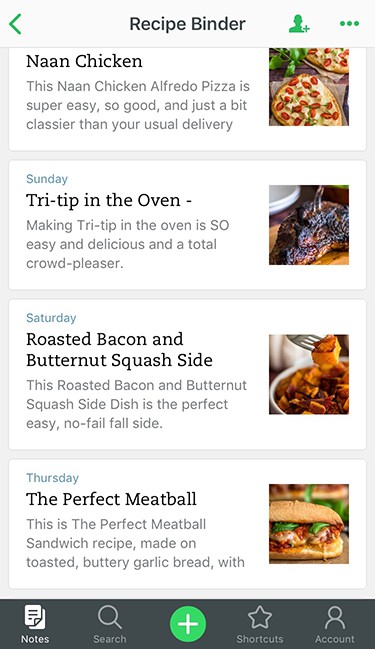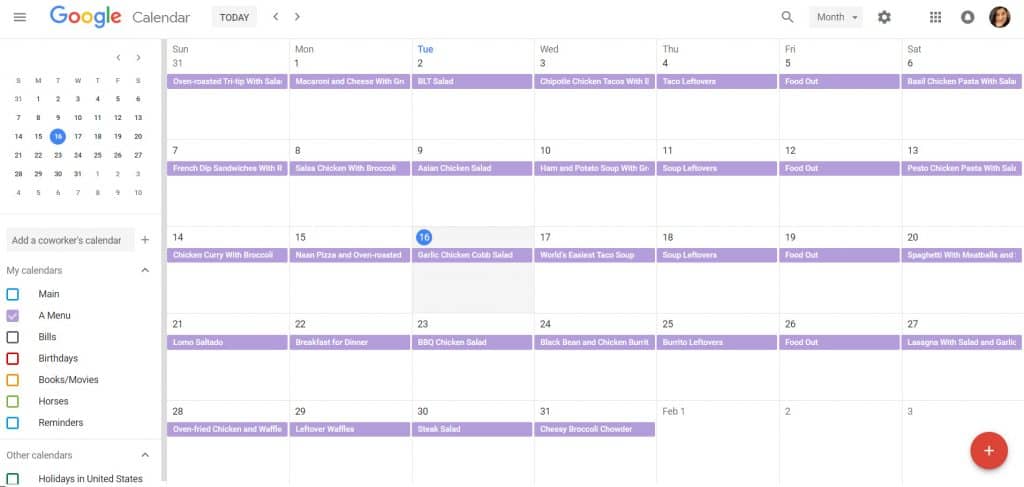Everything you need to know about meal planning including do’s and don’ts and step-by-step instructions for creating a system that works for you.

In my reader survey from a couple of weeks ago, I asked if there were any specific posts you’d like to see on the blog, and to my delight, one of the most popular requests was for a post on meal planning. Guys, this makes me so happy because I LOVE meal planning. I do it religiously, and if you know me in real life, you’ll know that it’s something I try to convince everyone to do for themselves because it will absolutely change your life for the better.
Why should you meal plan?
- It will save you money. Eating at home and shopping from a grocery list rather than throwing a bunch of things you think you might eat into your grocery cart will absolutely cut the amount you’re spending on food and probably eliminate a ton of food wastage.
- It will help you eat healthier. It’s far easier to make healthy decisions and plan nutritious meals once a week rather than at 5:30 every day when you’re starving and something hot and greasy and quick sounds like heaven.
- It’s one less thing to worry about every day. Happiness is never having to wonder what’s for dinner.
Meal planning is one of those things that becomes second nature after a little while, and once you get in the habit of it, you’ll never want to go back to wondering what to cook for dinner on a Monday afternoon. But it can be a little tricky to start because there are so many little things to figure out before you can begin, so I’m going to take you through setting up a meal planning system step-by-step from start to finish.
Before we start setting up a system, here are some general rules to keep in mind while meal planning. Obviously, rules are meant to be broken, but these do’s and don’ts will help keep things simple in the beginning.
The Do’s and Don’ts of Meal Planning
- Don’t be overly ambitious. Meal planning only works if you’ll actually adhere to your recipe schedule, and you’re more likely to do this if you keep most of your recipes simple and easy.
- Do keep breakfast and lunches simple and repetitive. One of the biggest mistakes people make when meal planning is getting too ambitious when planning these meals. Unless you’re already someone who cooks breakfast and lunch every day, beginning to cook three meals a day every day all at once is going to be overwhelming. Plan something nutritious and easy like instant oatmeal or pre-made smoothies that you can eat for breakfast all week and for lunch, alternate a couple simple lunches like hummus and pita, and homemade sandwiches.
- Do stick to simple sides during the work week. Plan things like Microwave-steamed Broccoli, Butter and Garlic Green Beans, or store-bought salad mix so you know you are getting your veggies in but aren’t adding a ton of work to your dinners.
- Do be flexible and forgiving. Meeting ran long? You can make Tuesday’s easy dinner on a Monday. Don’t be afraid to shift things around. And if you have to grab a burger on the way home, it’s not the end of the world. Just make sure to stick to your schedule the rest of the week.
- Do have a backup plan. We all have those days where we come home exhausted, and let’s be real, cooking a full dinner is not happening. Keep a few go-to emergency dinners in your back pocket for those nights. I always know that I have the ingredients for super easy Macaroni and Cheese in my cupboard, and when things are even worse, I keep a few frozen Naan Pizzas in my freezer or just make popcorn for dinner.
Alright, we’ve covered the why’s and the do’s and don’ts. Now we’re getting to my favorite part. Time to gather our tools and set up a meal planning system.
This post may contain affiliate links, which means I receive a small commission if you make a purchase using them. There is absolutely no additional cost to you.
How to Create a Meal Planning System
Assemble your recipes: Gather all your favorite recipes in one place, be it a recipe binder or digital recipe notebook. I’ve been using Evernote for mine since *checks earliest recipe date* 2013, and I love it.
Not only does having all your recipes in one place make cooking during the week simpler, but when it’s time to plan your week, you can scan through them all and see what sounds good. For new recipes, I recommend keeping a bookmarks folder or a Pinterest board specifically for recipes you want to try.
Decide where you are going to keep your meal plan: You can scribble it on a whiteboard, print out a calendar and keep it on the fridge, record it in your planner, or keep it digital with Trello or an online calendar. Experiment and see what works best for you.
I use Google Calendar for my meal planning because you can drag and drop recipes around, share the calendar with family and roommates, and it’s always available on all your devices. If you want to see a deep dive on this topic, go check out How to Meal Plan Using Google Calendar.
Make a weekly template: Assigning loose categories to your days will make meal planning easier because it narrows down your choices for each day. Scheduling in things like one meal out a week and one meal of leftovers also builds flexibility into your schedule and gives you two fewer meals to figure out.
A sample template might look something like this:
Monday-Easy/Crockpot
Tuesday-Salad or Vegetarian
Wednesday-Soup or Mexican
Thursday-Leftovers
Friday-Food Out
Saturday-Pasta
Sunday-Try a New Recipe!
And translate into:
Monday-Salsa Chicken with Broccoli
Tuesday-Asian Chicken Salad
Wednesday- Ham and Potato Soup with Green Beans
Thursday- Soup Leftovers
Friday-Food out
Saturday-Pesto Chicken Pasta with Salad
Sunday- Healthy Caprese Skillet Lasagna with Salad
Make meal planning an enjoyable part of your weekly routine: Take a minute to look at your schedule and figure out when you’re going to meal plan and do your shopping. To make things less overwhelming, don’t do both on the same day. I like to schedule time on Thursdays to plan my meals and make my list and do my shopping on Fridays. Make an appointment with yourself to do both of these things and put them on your calendar every week.
In order to make this habit stick, at least in the beginning, schedule in a little reward for yourself when you do each. It could be something as simple as a cup of tea or turning on a rerun of your favorite show in the background while you meal plan and promising yourself a cup of coffee from the in-store cafe during your shopping trip.
I’ve given you my best meal planning tips, we have a system, templates, and made time for planning and shopping. Once you’ve done all those things, it’s time to actually plan a menu.
How to Meal Plan
- At your scheduled time, check your fridge, freezer, and pantry. What do you have? What needs to be used up? Make a note of this.
- Check your calendar. Are there any nights this week you can’t cook? Nights you’re feeding extra people? Nights you need something super easy?
- Check the weekly advertisements- If you get supermarket flyers, browse through them. Is there anything on sale? Anything looking good?
- Use your template to fill out your menu for the week, taking into account what foods you already have, your schedule, and any good sales.
- Pair main dishes with simple sides.
- Look at your meat dishes and add reminders to your calendar or plan to take meat out of the freezer a day or two before you need it.
- Make your shopping list.
- Go shopping and enjoy a week of stress-free eating!
Have any questions? Tips of your own? Leave them in the comments! I could talk about this all day. 😃







Jessica says
Soooo helpful!!! Thank you Tracy for breaking it down into reasonable steps!
Tracy says
Why, thank you, Jessica. 😉
Karina says
Hi Tracy, i’ve struggled with meal planning but didnt give up on it. Im finally getting the hang of it! And yes, it’s a money and time saver and my family loves all the meals im making. And best perk of all – less stress. Thanks for the tips!
Tracy says
Thanks, Karina!!
Chichi says
This is an awesome and inspiring post. It was super helpful. Thanks
Tracy says
So glad you found it helpful! Thanks, Chichi!
Elizabeth | The Recipe Revival says
Great tips! I love how your strategy is simply laid out. I try by best to meal plan. Sometimes it works, sometimes it doesn’t.
Tracy says
Thanks, Elizabeth!
Chris says
I’m such an awful meal planner so this is actually incredibly useful! I’ve bookmarked it for when I get my act together and decide to start prepping 🙂
Tracy says
Thanks, Chris! I hope you find it helpful!
Lisa says
I’ve always admired/resented people who are effective meal planners. I am not. I’m more of a QuickFire Challenge dinner maker, taking remnants from the fridge and repurposing them into something “interesting”. LOL.
Tracy says
Hehe, thanks, Lisa! I am awful at those QuickFire Challenges 😉 so dinner time before I started meal planning was a nightmare!
Amanda Finks says
Love this list! So many great tips 🙂
Tracy says
Thanks, Amanda!